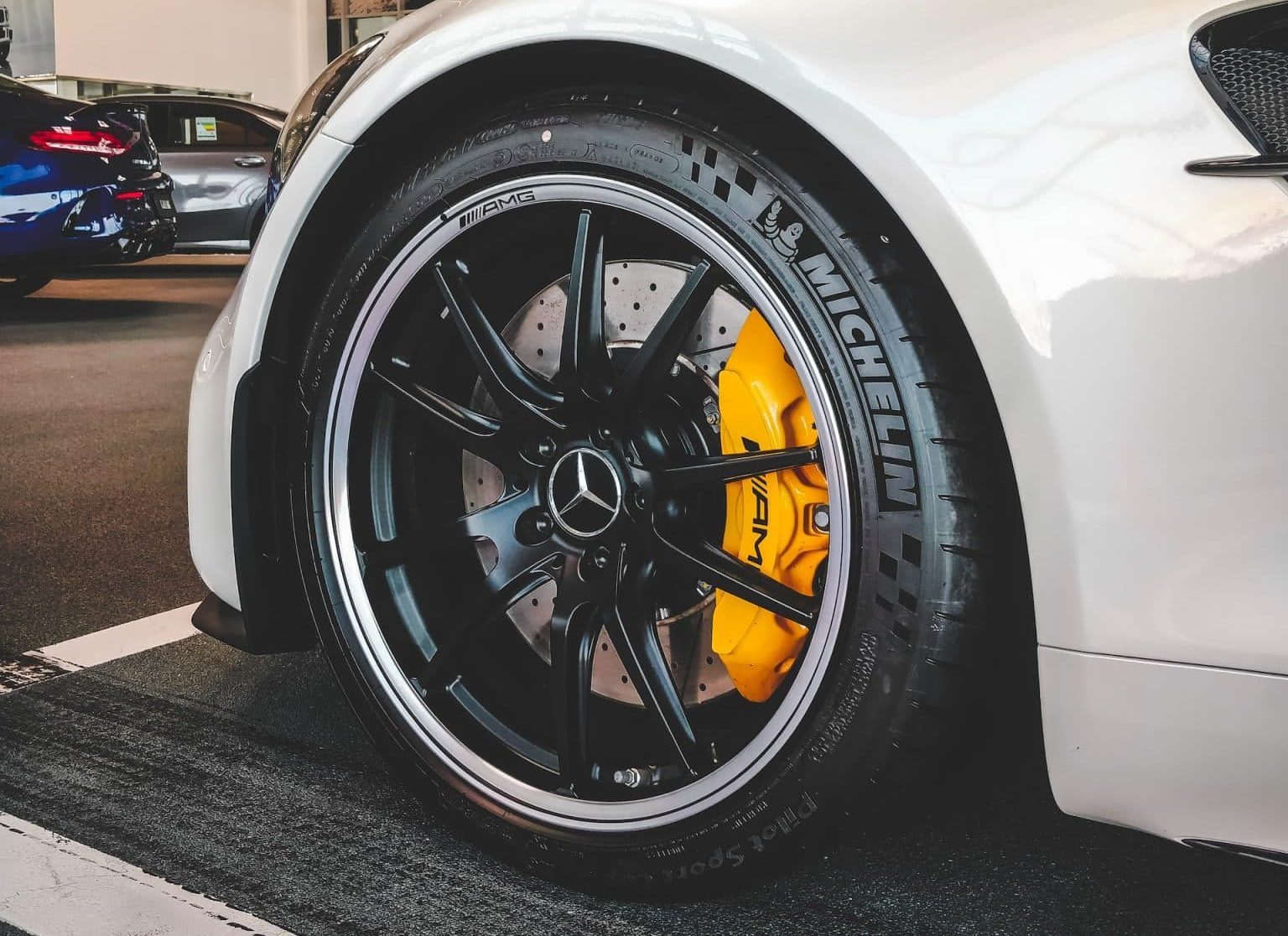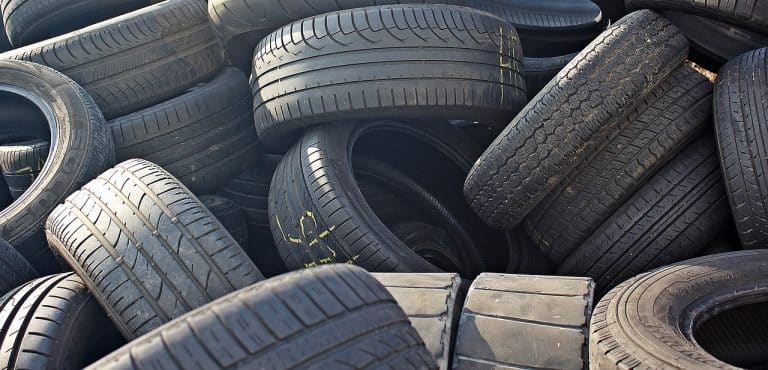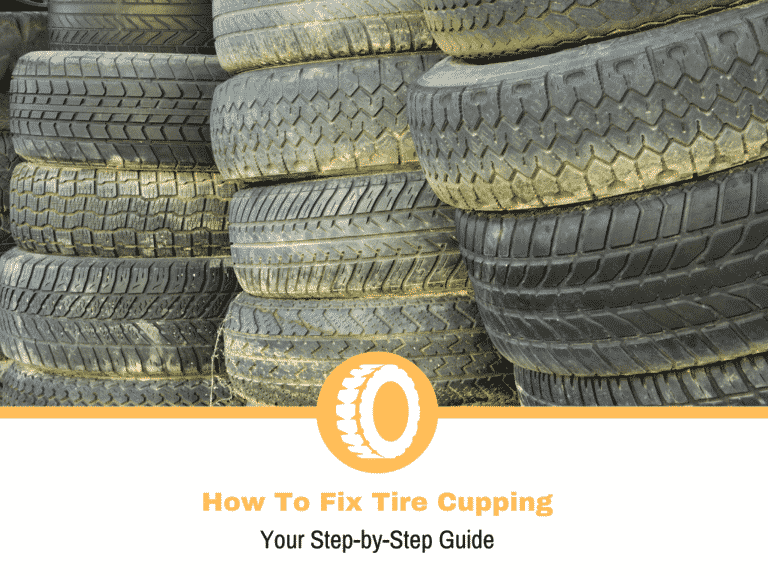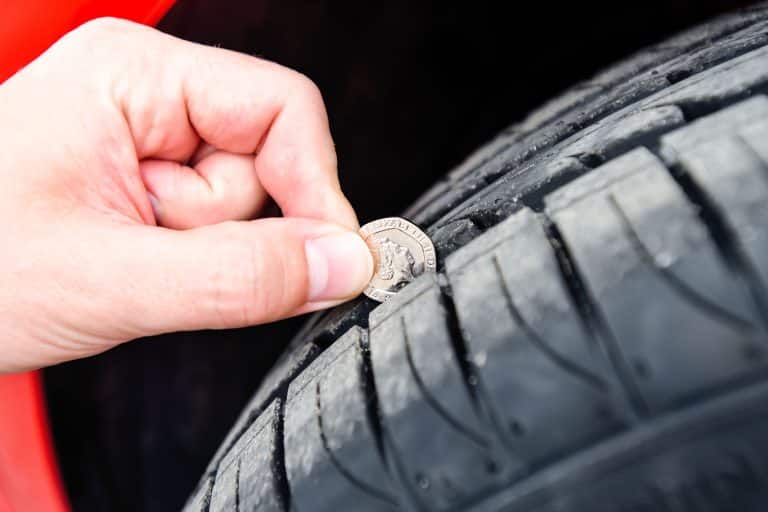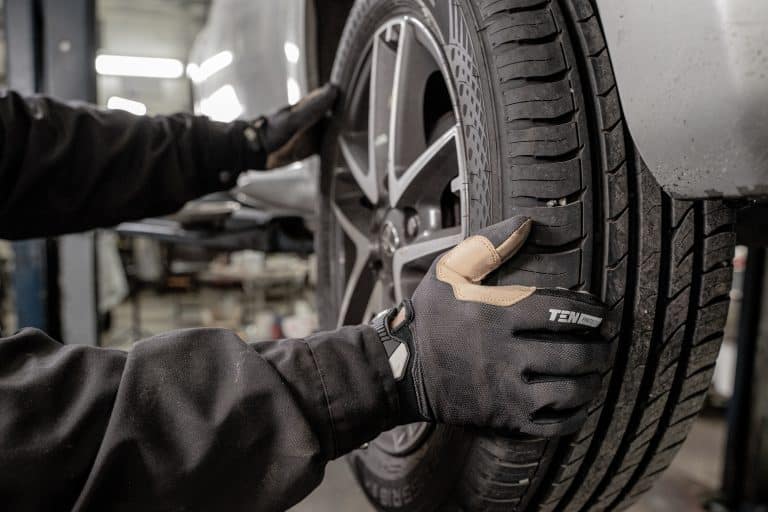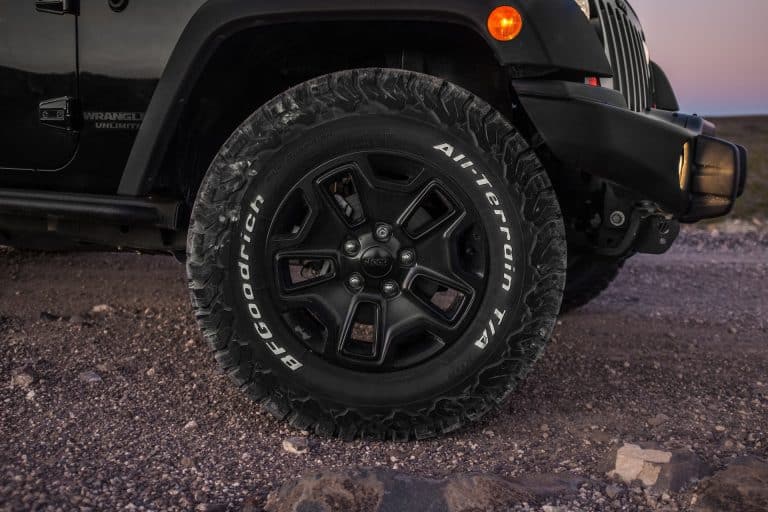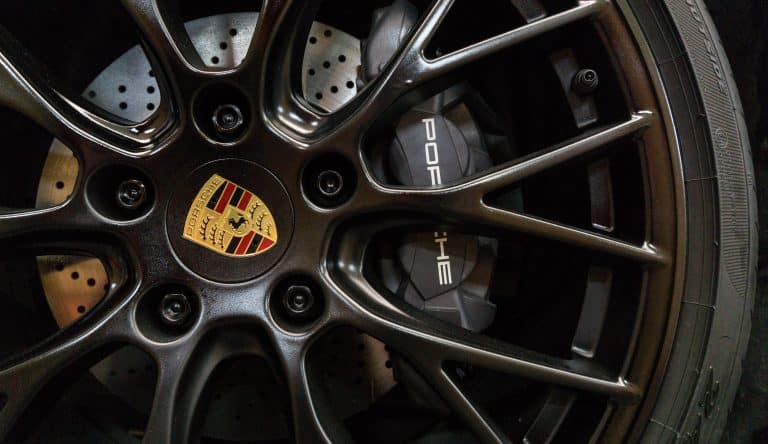SL vs XL Tires: What’s the difference?
Throughout the years, as the car industry grew, the tires followed closely. In the early days, the lack of cars and options meant the tires were basic and you couldn’t choose between multiple models. Today – it’s a different story.
As car manufacturers offered more models with multiple trims, the tire industry had to follow to satisfy the needs of the customers. The car you have now probably came with several size options for the tires from the factory.
With so many options, manufacturers need to use markings so that customers know what they’re getting. The markings range from size, speed, load, winter ratings, and more.
The common ones like the size are not a problem, but what about load capacities? Some people mix this with the load index, which is two different things.
If you’re in a group of people that need some clarification, continue reading, as I’ll explain the whole thing.
SL vs XL Tires
SL stands for Standard Load, meaning that these tires are designed for everyday driving. They can carry the weight of the vehicle and its occupants with no issues. XL is for Extra Load and these are tires commonly used in situations where you’d need to carry heavier loads, but not always. Also, some performance cars also use XL tires. The internal construction is much more robust when compared to SL tires and will handle a lot more.
What are SL Tires?
Standard Load or SL are tires designed for normal driving, which is the simplest explanation I can give. These are the tires you’d get for your hatchback or sedan that can handle your daily commute routine.
Yes, they come in multiple models with different load indexes, but they are in the “normal” region. This means that they will carry the weight of the vehicle and its passengers without any issues.
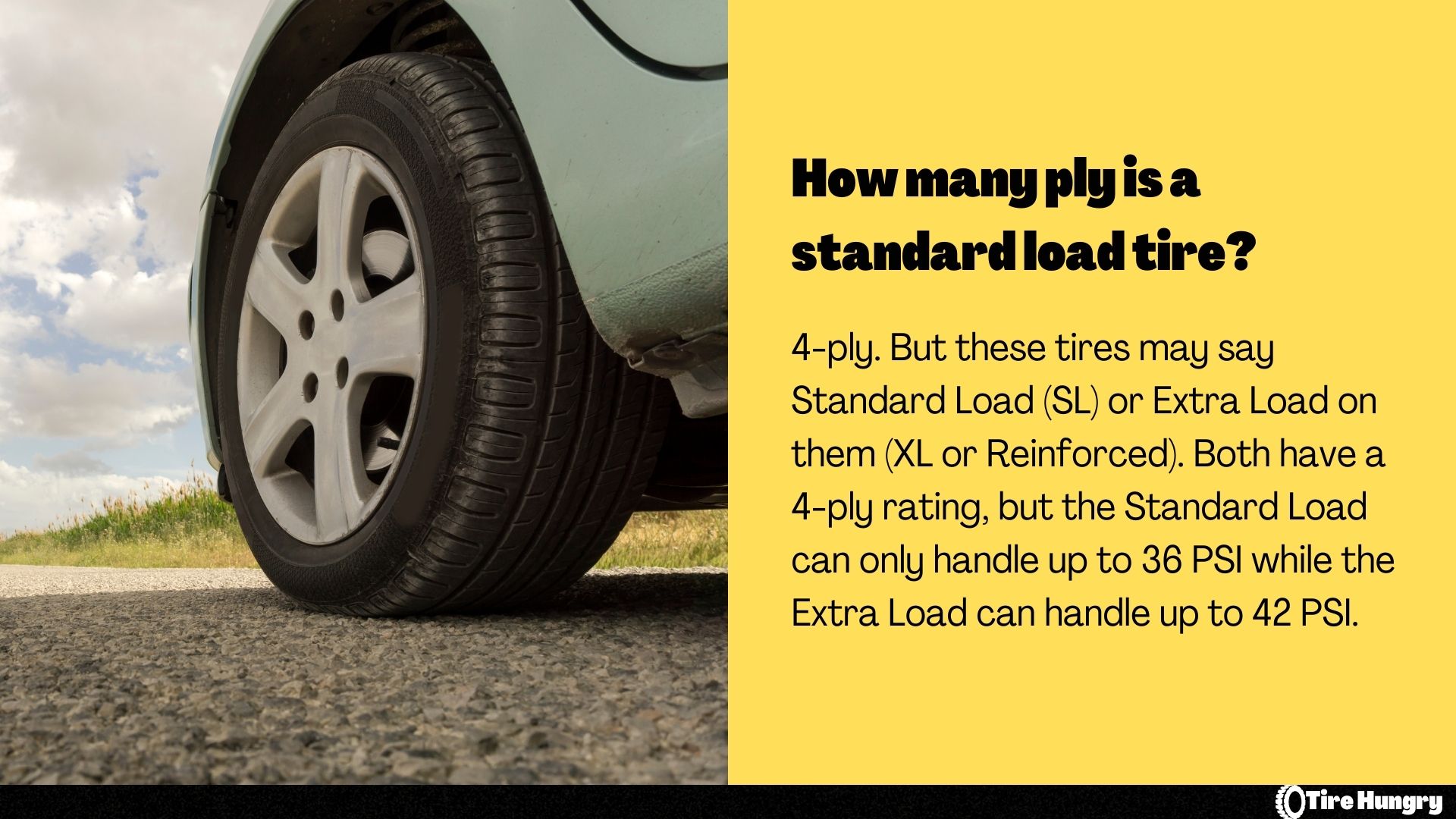
The internal construction can vary from one manufacturer to another. Standard construction means that the tires don’t have reinforcements to handle bigger loads. Regardless of that, they are still properly tested and will handle the daily abuse you’ll serve them during your morning runs.
As far as markings are concerned, this is where some problems arise. In many models, SL tires won’t be marked, so you’ll need to know this information to assume the type. Even if you’re not sure, your vehicle type will determine if they are standard load or not.
Most passenger cars have SL tires. Another distinguishable aspect of these tires is the load pressure. Most of these tires will have a maximum load pressure of 35 psi.
Pros of SL Tires
The first thing that most people will talk about when it comes to SL tires is the price. Considering that there is no reinforcement, the manufacturing process is cheaper, so the tires are sold at a more affordable price.
The weight is one advantage of not having reinforcement. The wheels are part of what’s called unsprung mass, which can affect the handling. If the weight is larger, then the car won’t be as nimble. Sure, other aspects can affect how it handles, but overall, the lower the weight, the better.
Refinement is something that SL tires are better at. Overall, they will provide a softer ride quality.
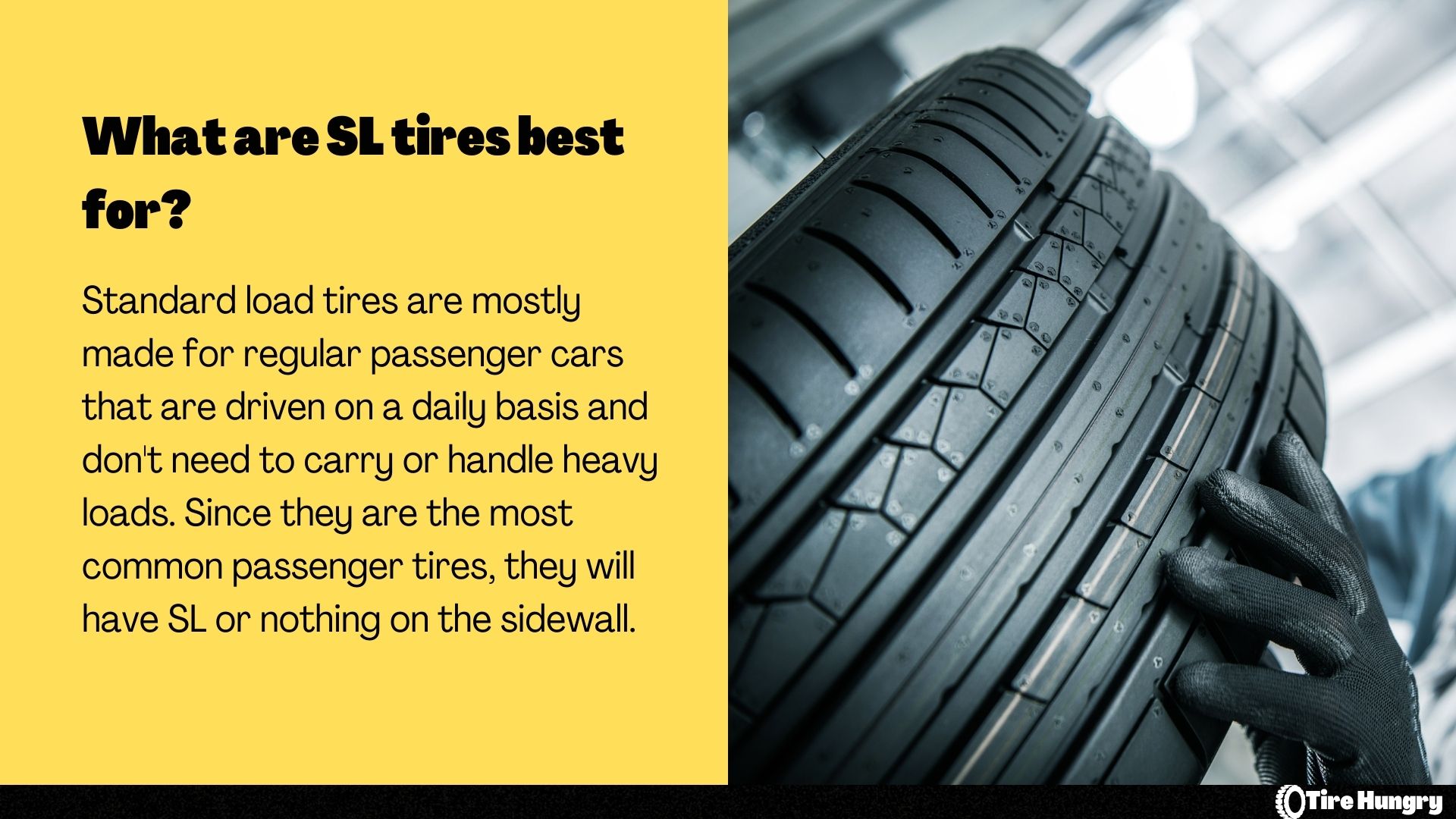
Cons of SL Tires
Standard load tires have some advantages, but there are some disadvantages as well. Considering that there isn’t any reinforcement in the internal construction, the tires won’t handle a lot of load.
Without the reinforcements, the SL tires can be damaged more easily. Again, they aren’t flimsy and a danger to society, but won’t handle a lot.
What are XL Tires?
XL doesn’t stand for extra large, it stands for Extra Load, meaning that, unlike SL, these tires can handle more. Even though you can see them on normal passenger cars, these are tires you’ll also see on SUVs and light trucks.
The internal construction of XL tires starts off similar to the SL ones. As the process advances, the reinforcement material is added to the construction, which gives it its properties. For the most part, these tires get reinforced at the shoulders and sidewall to ensure the performance is as advertised.
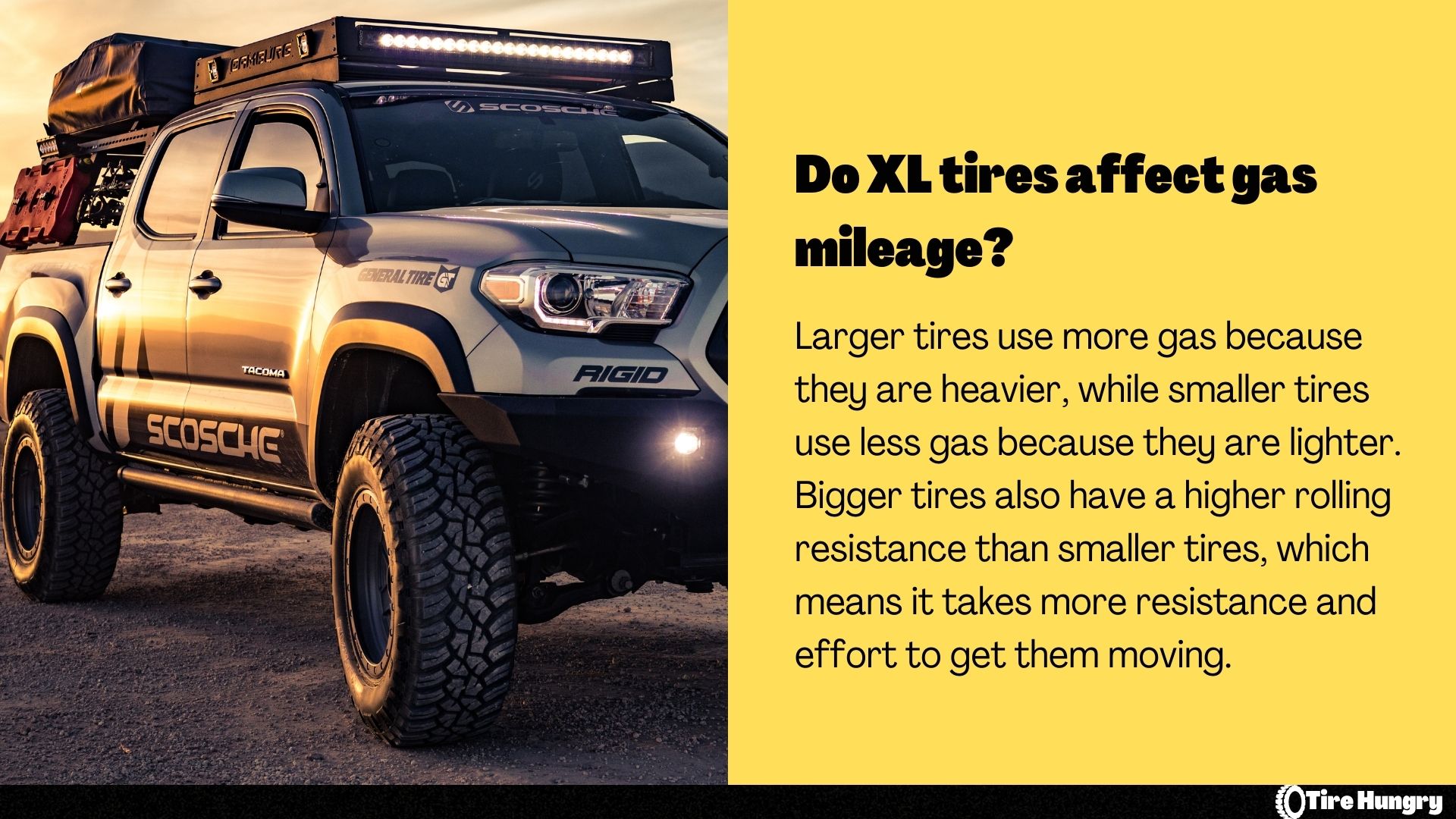
The idea of the tires is to handle larger loads. This doesn’t mean heavier loads, but in most cases, that’s the main application. XL tires have a maximum load pressure of 41 psi, which shows how much more the reinforcements can handle.
Like all tires, the markings are crucial and unlike SL tires, you won’t be able to miss the XL ones. Regardless of the manufacturer, these tires will have the marking somewhere on the sidewall.
In terms of application, there are multiple, unlike with the SL tires. XL tires are usually fitted to larger and heavier vehicles. A large and powerful sedan would probably have them, or a sports car. In any case, an SUV or a light truck will have them for sure. Not only are they used for heavier loads, but these tires can also handle high speeds better.
Pros of XL Tires
I just ended the previous section with a pro – XL tires can handle a lot more than SL tires. Regardless if we’re talking about heavier loads or higher speeds, these tires will have no problems handling those tasks.
The internal structure with the reinforcement also makes these tires more durable. Hitting a large pothole can be “deadly” to a regular tire, but an XL one can fare better. I’m not calling them indestructible. I’m saying that they can take a beating.
On the other hand, the internal construction also enables these tires to be driven at higher speeds. Yes, each model will come with different speed ratings, but in general, they are higher when compared to the regular models.
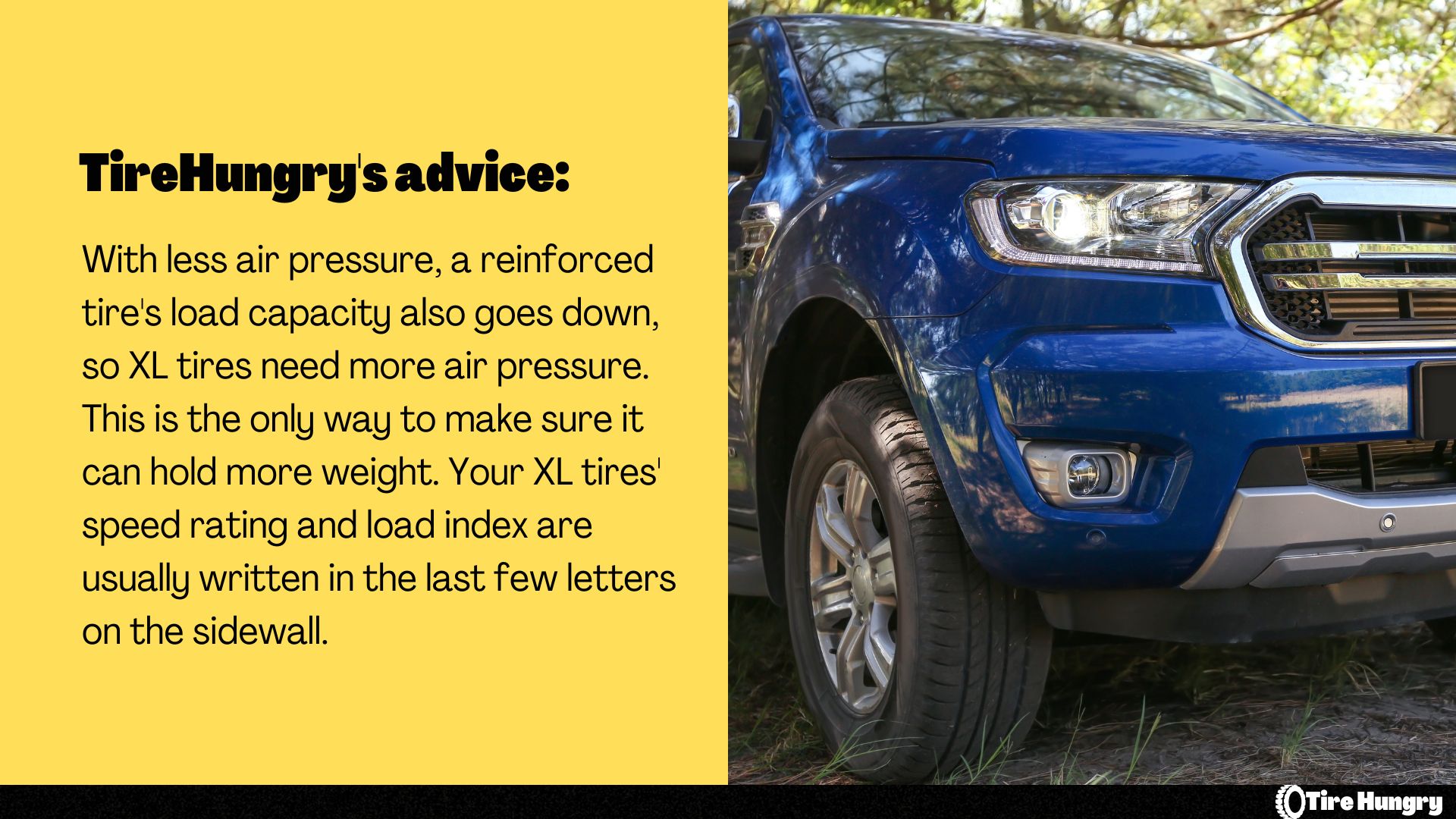
Cons of XL Tires
The thing that makes SL tire better is the main disadvantage of XL tires. Because of the construction and extra material, these tires are more expensive. You get more out of them, but you will need to pay more as well.
Having that extra material means that you’ll also add more weight to the wheels. They won’t have a problem with that, but your vehicle will have more unsprung mass. It’s not a problem with SUVs or light trucks, but with a sports car, it can make a difference. With that said, it’s a sacrifice you’ll need to make to have a tire that can withstand the torture.
The good news here is that sports cars usually have lighter wheels, so heavier tires won’t be a massive issue.
How to choose which tires are the best for your vehicle?
The most important thing you need to understand is that it’s not something you don’t get to decide. Car manufacturers make that decision for you and whichever type of tires the car had from the factory, you should use the same.
Most car enthusiasts are fans of changing things and making upgrades and, in this case, they need to be careful. If the car in question has SL tires from the factory, you can change them with XL ones. You’re adding weight, but if you modified your car to make more power, it’s not a bad idea. The upgraded tires will cope with the power better and survive at higher speeds.
With all of this, there are a few things to keep in mind. Sure, the tires will be more expensive and all that, but the added weight will also play a role. The handling won’t be the same, so it may take a while to “relearn” how your car behaves.
On the other hand, you should never fit SL tires to vehicles that came with XL ones from the factory. Regardless if is because of the weight or the speed, SL tires won’t handle weight as well as XL tires. Making this change can be a safety hazard, so don’t do it.
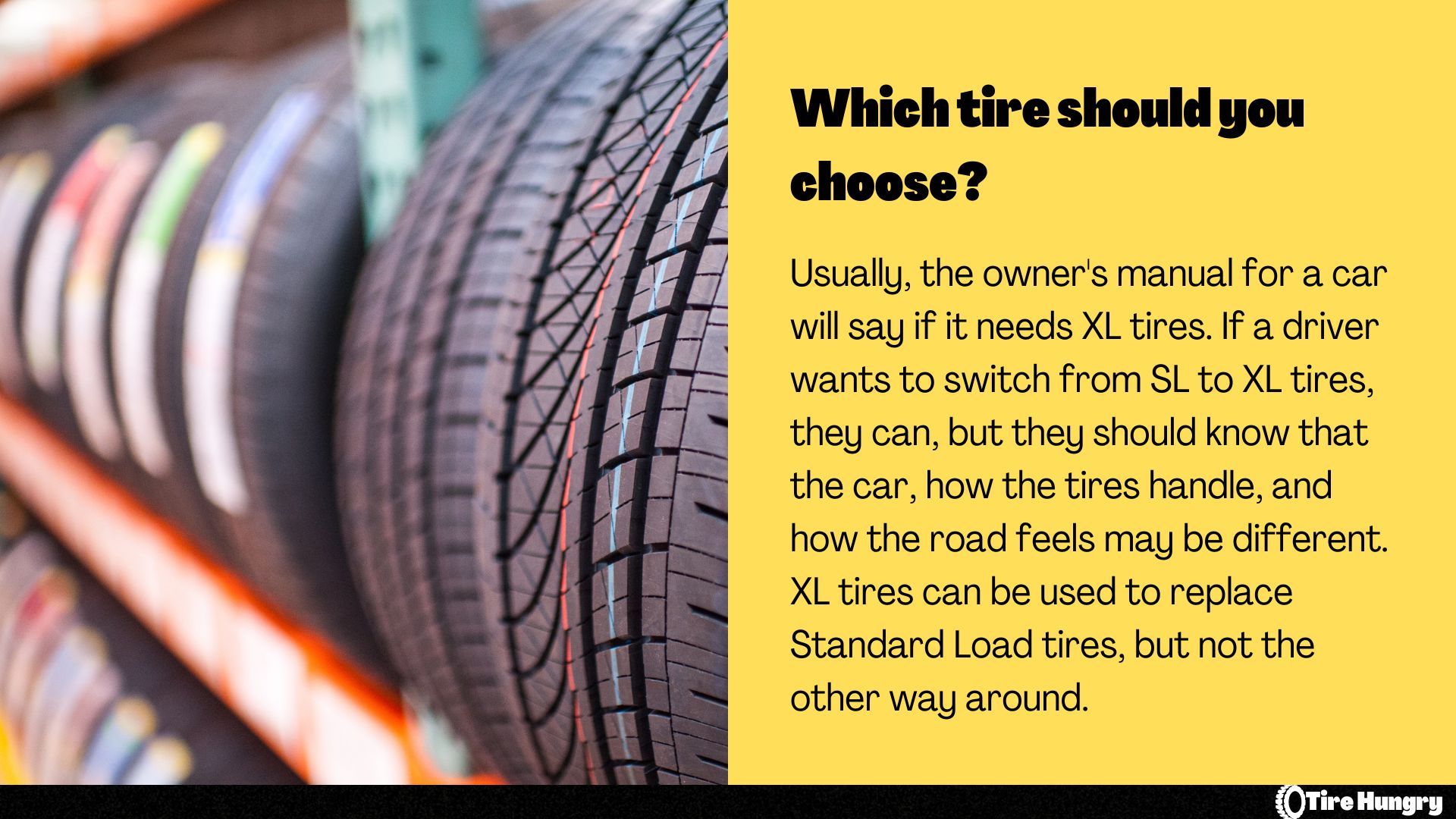
As far as identifying the type of tires the vehicles come from the factory, you have the user manual to help you out. You can check the tires that are currently fitted, but if you have a second-hand car, you have no way of determining if the previous owner fitted the correct tires. As a final alternative, there are plenty of websites that have this information, so you can check those as well.
Conclusion
Whenever tire load is mentioned, most people think of the load index, which isn’t the same as the load capacity. Yes, they are similar but offer different information about the tires.
Even though both have their advantages and disadvantages, they are intended for different use cases. There are some situations where interchanging them is doable, but it doesn’t apply to all.
At the end of the day, as long as you follow the recommendations from the manufacturer, you won’t have any issues. They test and make sure that the tires they recommend will perform as best as possible and the same goes for the load capacity.
